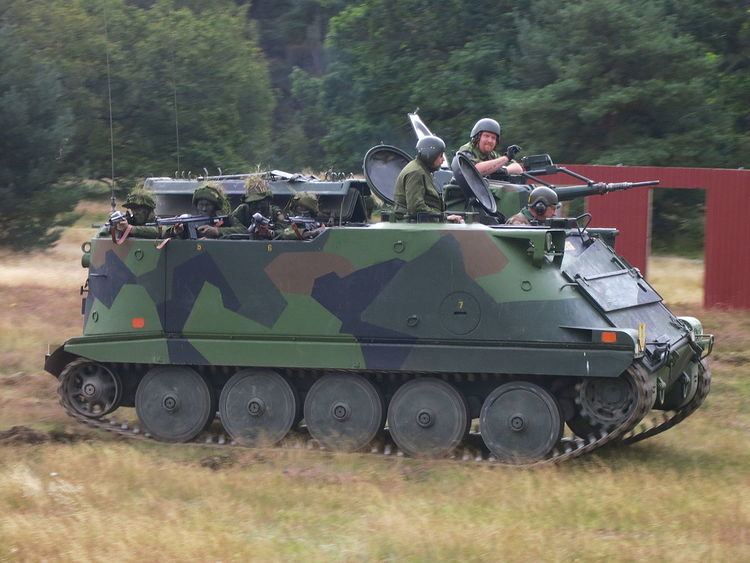Length 5.35 m Height 2.50 m | Weight 14 tonnes Width 2.86 m | |
 | ||
Type Armoured personnel carrier | ||
Pansarbandvagn 302 (Pbv 302) is a Swedish high-mobility armoured personnel carrier that was developed to meet the operational requirements of the Swedish Army. It was designed and manufactured by Hägglund and Söner in Örnsköldsvik (now Hägglunds Vehicle AB). The design was commissioned in 1961 as a replacement for the Pbv 301. Production ran from 1966 until 1971. The vehicle has been upgraded and continues in limited service even though the CV 90 series is now the standard infantry fighting vehicle in Sweden, used both at home and by Swedish forces abroad.
Contents
Description
The Pbv 302 has wide tracks and a high power-to-weight ratio, and has exceptionally good off-road mobility, and the low ground pressure enables it to operate over summer bog and winter snow. It is powered by a Volvo 10-liter, 270 hp diesel engine. The vehicle is fully amphibious with little preparation by the crew. It is fitted with a 20 mm Hispano-Suiza type 804 cannon taken from the scrapped Saab 29 in a one-man turret. High-explosive cartridges were originally fed from 135-round belts, and armor-piercing cartridges were fed from a 10-round magazine. Three belts and 10 magazines were carried inside the vehicle. The arrangement was deemed overly complicated and was replaced by 30-round magazines, 10 of which were carried. The vehicle, which weighs 14 tonnes, has a crew of three (commander, driver and a gunner) and carries a squad of eight troops. The infantry squad is able to fight through two large roof hatches, though standard procedure would be to dismount through the two side-hinged doors in the rear to fight. Maximum road speed is 65 km/h. The range on roads is about 300 km.
The Pbv 302 shares common components with the Ikv 91 tank destroyer and total production was approximately 650 units.
Versions and variants
Two more vehicles were developed using the Pbv 302 chassis.
